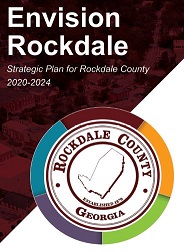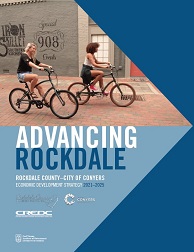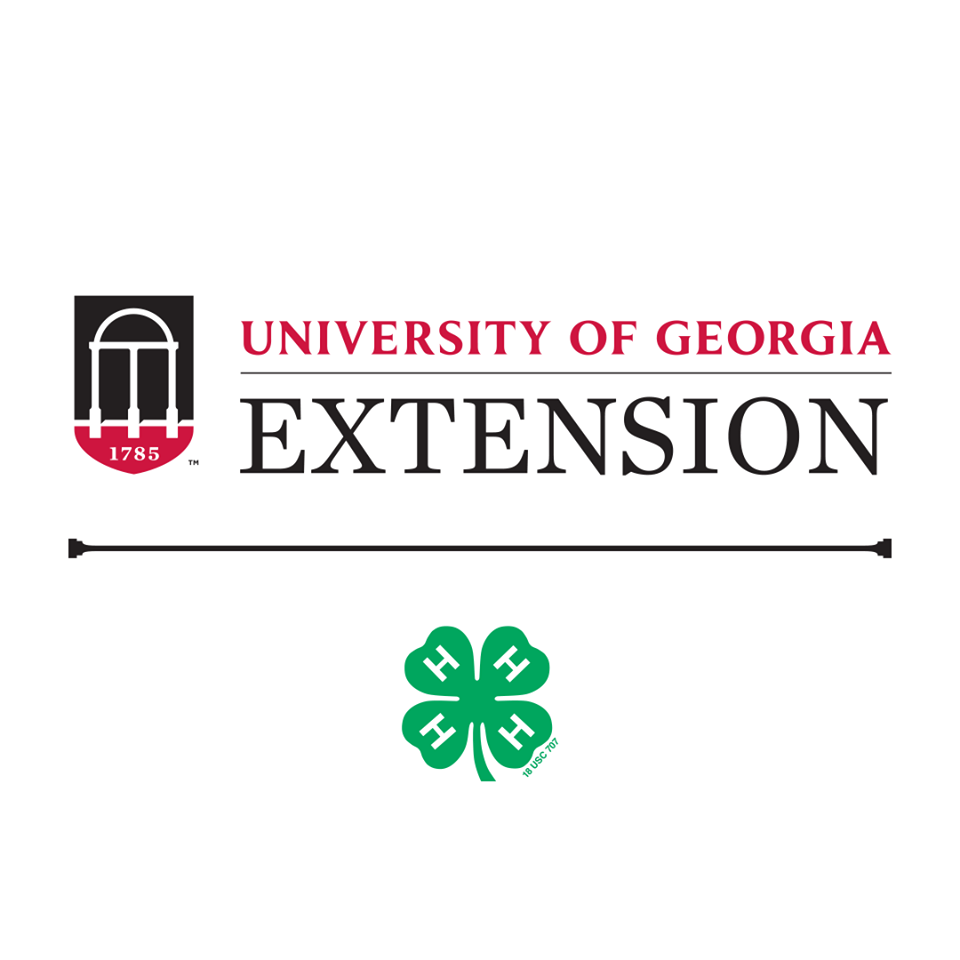Department Menu
Conservation Use
A Georgia statute provides that conservation us properties and residential properties located in transitional developing areas shall be valued at its “current use value”. There are three basic types of property that may qualify for conservation use:
1. Farm Use Property:
The purpose for this type of property is to remove the transitional real estate market influences on land and thus promote the continued use of the property for bona fide agricultural (farm) purposes.
Bona fide agricultural (farm) use properties include properties currently being used for one or more of the following:
- Raising, harvesting, and / or storing crops;
- Feeding, breeding and / or managing livestock or poultry;
- Producing plants, trees, fowls, or animals for farm-type purposes; or
- Producing aquaculture, horticulture, floriculture, forestry, dairy, livestock, poultry, and / or apiarian products.
To qualify, the nature of the land and history of its use must show that its primary purpose is good faith production of one or more of the purposes described above.
Besides having a farming history and stability, the owner of the property must continue to use the land for bona fide agricultural use purposes. In addition, at least 50% of the property must be used in one of the above categories in order to qualify.
2. Environmentally Sensitive Property:
All properties applying for this type of special treatment must have certification from the Department of Natural Resources that the property is considered environmentally sensitive, and must be maintained in its natural use.
Additional Qualification Limitations for Farm Use and Environmentally Sensitive Properties:
- No more than 2,000 acres can be put into the program statewide.
- Only natural or naturalized citizens, estates, trusts are eligible.
- Family farm corporations that derive 80% or more of its gross income from this property can qualify provided that all owners of the corporation meet the previous qualifications.
- A bona fide nonprofit conservation organization designated so under Section 501©(3) of the Internal Revenue Code.
- Cannot lease the land to any non-qualifying person or entity.
3. Residential Transitional Property:
Bona fide residential transitional property is defined as being a residence that is in an area that is changing in use from residential to a more commercial or industrial use.
Additional qualification requirements of residential transitional properties are the following:
- Limited to no more than five acres.
- Must be private single family residential.
- Must be owner occupied
- Must be adjacent to property that has already undergone a change from single family residential use.
The Covenant
The owner of a conservation use or residential transitional property must enter into a 10 year covenant. This covenant is a sworn agreement that the property owner will maintain the current use of the property for 10 years from January 1 of the year the property is entered into the covenant. Upon entering into this covenant, the following provisions apply:
A. Applications and Changes:
- The applications need only be filed once.
- All applications must be properly filed between January 1and April 1 of the year the covenant is sought.
- Property owners who receive a change of assessment notice during the year may file an application for the covenant during the 45 day appeal period. This only applies to property owners who receive a change of assessment notice.
- All parties involved in the current ownership of the property must sign the application.
- For owners of properties that are less than 10 acres in size, the statute requires that proof of bona fide agricultural use be submitted. All such proof must be given within the same time periods for filing applications.
- Any changes in use must be reported between January 1 and April 1 of the year immediately following such change. If not, a breach of the covenant can occur.
Different types of conservation uses:
- Crop land
- Pasture land
- Timber
- Environmentally Sensitive
If a change in ownership occurs, all parties involved in the original covenant and the current ownership must come in between January 1 and April 1 of the year following the change in ownership and sign applications for continuance of the covenant.
7. Rockdale County Board of Assessors office may deny any application when proof of a bona fide agricultural use has not been submitted.
B. Covenant Breaches:
If a breach occurs, there are two types of penalties that can be imposed which constitute a lien against the property and are collected like delinquent taxes are collected:
1. Double Tax Recapture Penalty
This penalty is applied to the entire tract which was subject to the original covenant. The penalty levied is twice the tax savings that occurred over the life of the covenant plus interest. Example: If an owner entered into the covenant and the savings on the owners tax bill amount to $100 per year, and in the fifth year the covenant is breached, the penalty levied would be $1000 (that is 5 years worth of savings at $100 per year) at that time doubled, plus the current interest.
2. One Year Tax Recapture Penalty
This penalty is applied if one of the following conditions occurs: Transfer of all or part of the property to a lien holder due to foreclosure or in lieu of foreclosure; Transfer of all or part of the property as a result of the owners incapacity to continue to maintain the qualifying use due to illness or disability.
The penalty levied is only the amount of the tax savings for one year plus interest in the year the covenant is breached.
C. No Breach Covenant Changes
The following transactions do not constitute a breach of the covenant:
- Selling all or part of the property to a person or entity who is qualified to enter the conservation use covenant and agrees to continue the existing covenant on the purchased property. NOTE: Both properties must be able to qualify individually to remain in the covenant. Such a continuation must be applied for between January 1 and April 1 of the year immediately following the selling of the property. NOTE: If both parties agreed to continue the covenant at any time thereafter, the penalty will be imposed upon the entire tract that the original covenant was made on and both parties must start over to requalify.
- Selling all or part of the property following the death of an owner who was party to the covenant. In this event, the covenant is deemed to cease to exist and a new one must be applied for if the property is to be re-entered into the covenant. This must be done between January 1 and April 1 of the year immediately following the death of the owner, otherwise the value reverts back to its original fair market value.
- The selling of all or part of the property under the pressure of a buying party’s power of eminent domain.
- The transfer of part of the property to a relative provided that:
• The relative is related within the fourth degree of civil reckoning:
No more than 5 acres can be transferred to any one relative, and if multiple transfers are made, the total that can be transferred can not exceed 5 acres, the relative must build or locate a home and personally reside in that home within 1 year of the date the transfer takes place and continue to reside there for the balance of the covenant period.
• All parties involved file for continuation of the covenant between January 1 and April 1 of the year immediately following the transfer.
5. Mineral exploration is permitted if the primary purpose of the property remains bona fide agricultural.
6. Allowing all or part of the property to lie fallow or idle is permitted for no longer than two years for any five year period during the life of the covenant.
NOTE: If the property lies fallow or idle for more than two years during the life of the covenant, it could constitute a change in the use of the original covenant and possibly breach the covenant): or b) As part of a land conservation program; or c) As part of a federal agricultural assistance program.
How the Program Affects the Valuation of Qualified
Property
If entered into the conservation use program, the qualified property will be valued at a lower rate that applies to the land only. These values are based on state schedules according to the soil type that is present on that property. These values are updated each year by the state and can not increase or decrease more than 3% for any given year during the life of the covenant unless there is an actual change in the physical characteristics of these buildings. Any other type buildings, such as residences, that are located on the property will be valued at their full fair market value and remain subject to whatever market influences that may occur.
Does My Property Qualify For The Conservation Use Program?
Yes, if a) 50% or more of the property is being used for good faith agricultural products or timer, b) can provide proof of usage, c) property remain in this use for ten years, d) owners meet qualifications, e) less than 2000 acres state wide, f) no restriction of agricultural use, and g) understands penalties that can be imposed.
Conservation Use
The deadline for filing Conservation Use Valuation Assessment (CUVA) is April 1st. Please mail your completed application and certified check or money order to P.O. Box 562, Conyers, GA 30012.
This application must include an original signature in blue ink to be valid. For more information, contact the Board of Assessors office at (770-278-7676).
Address
The Board of Assessors
958 Milstead Ave, Suite 101
(mail not received at this address)
P.O. Box 562
Conyers, GA 30012
Office Hours: 8:00 a.m. - 5:00 p.m.
Monday through Friday
Numbers
Telephone: (770) 278-7676
Fax: (770) 278-8906
Emails
To Request Property Information:
boa@rockdalecountyga.gov






